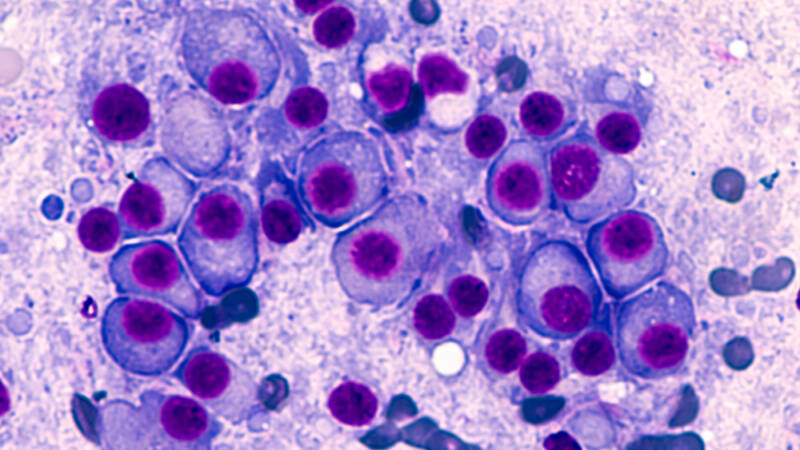What You Need To Know About Multiple Myeloma

Multiple myeloma – also known as plasma cell myeloma or just myeloma – is a relatively rare form of cancer. It affects only about 0.76% of the population or 1 in every 132 people. Despite it being a comparatively uncommon cancer, the American Cancer Society estimates that almost 35,000 new diagnoses will be made in 2021 in the U.S.
Myeloma is a cancer of the white blood cells in the bone marrow, typically occurring in the marrow of thee shoulders, hips, spine, pelvis, rib cage, and skull. Health plasma cells make antibodies that guard the body against infection. However, when multiple myeloma occurs, it causes the cells to build up and crowd out other essential blood cells, such as platelets, red blood cells, and healthy white blood cells. It can occur in the form of a tumor or an area of bone loss, both called lesions.
Compared to other cancers, little is understood about the causes associated with multiple myeloma. Statistics show that males are slightly higher risk for developing the disease than women, and that a myeloma diagnoses is twice as common for black people compared to white or Asian people.The disease is considerably more common in adults above the age of 65, with less than one percent of cases occurring in those younger than 35 years old.
Some implicated causes of multiple myeloma are:
- Exposure to harmful industrial chemicals like benzene, dioxins, solvents, and some agricultural chemicals
- Exposure to high doses of radiation
- Exposure to certain viruses like hepatitis, HIV, and herpes
People who develop myeloma have a condition called ‘monoclonal gammopathy of undetermined significance’ (MGUS) which causes a type of abnormal protein to form in the bone marrow. However, only a small percentage of people who have MGUS eventually develop this cancer.
Types
Multiple myeloma has different types and subtypes, categorized by the protein (or immunoglobulin “Ig”) produced by the myeloma cell. Each protein consists of two heavy chains and two lights chains.
- Heavy protein chains: G, A, D, E, and M.
- Light protein chains: kappa (κ) and lambda (λ)
Warning Signs and Symptoms
In the early stages, multiple myeloma often doesn’t have any obvious symptoms. When the disease has progressed to the point where normal bone marrow function is impeded, back and bone pain, fatigue, and recurrent infections are extremely common.
Patients may also experience:
- Brittle bones
- Frequent infections, like pneumonia, sinus infection, and urinary tract infections
- Excessive bruising or bleeding
- Limb weakness
- Shortness of breath
- Worsening tiredness
Since myeloma effects the body’s ability to produce healthy blood, it can lead to serious health complications, including:
- Anemia
- Bleeding disorders
- Reduced kidney function
- Fractures
- Hypercalcemia (high levels of calcium in the blood)
- Neurological complications
Treatment Options
The treatment for myeloma varies considerably based on whether the disease has advanced to a point where the patient is experiencing symptoms. Early stage myeloma patients may simply be advised to follow and watch and wait plan, with frequent check-ups to monitor the progression of the disease. If evidence of bone thinning is detected, doctors may intervene, using:
- Targeted therapy – Drug therapy that targets specific weaknesses of the cancer cells
- Immunotherapy – Medications that encourage the immune system to recognize and attack the cancer cells
- Chemotherapy – Drugs that kill cancerous cells. High doses are used before a bone marrow transplant.
- Corticosteroids – Medications that regular the immune system
- Bone marrow transplant – The diseased bone marrow is replaced with health bone marrow from a suitable donor
- Radiation therapy – High-powered energy beams target a specific area to shrink cancer cells
Evidence suggests that early intervention can improve the prognosis for myeloma patients. If you are experiencing any of the above-mentioned symptoms, consult your doctor immediately to stage the disease and create a treatment plan.